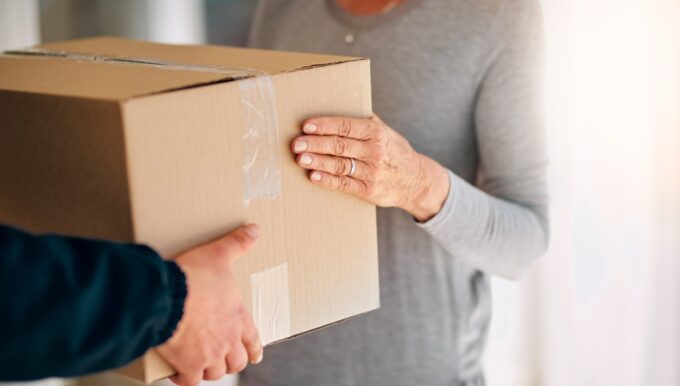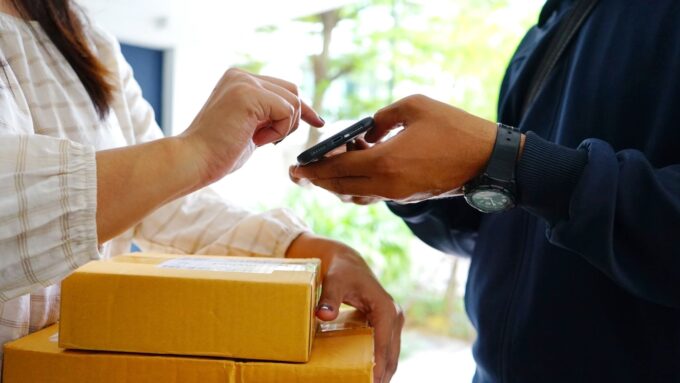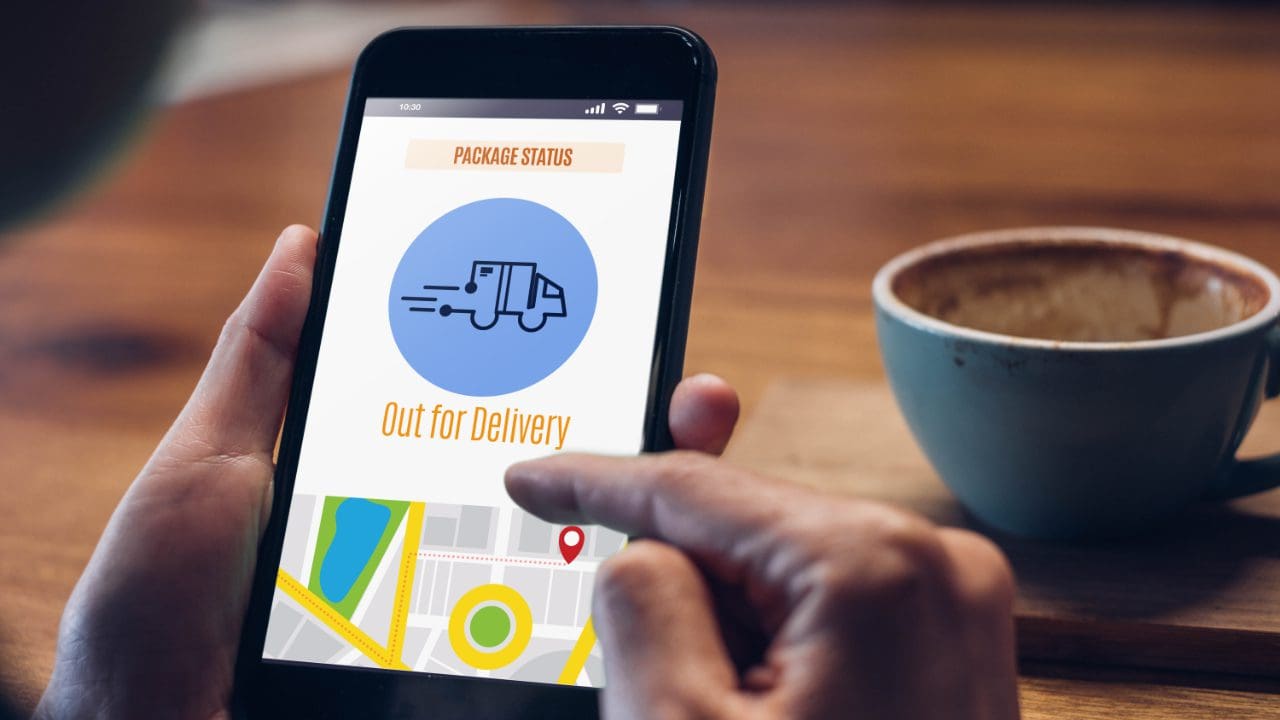When a package’s status updates to “Out for Delivery,” it means that it has left the final sorting facility and is en route to its destination. This status is a key indicator that your item is in the last phase of its journey. However, the time it will take to reach you can still vary.
Factors Affecting Delivery Time

Several factors can influence the time it takes for a package marked as “Out for Delivery” to arrive. These include the complexity of the delivery route, current traffic conditions, and the total number of deliveries assigned to the driver. For example, packages destined for urban areas with heavy traffic and numerous stops might experience longer shipment times compared to those in suburban or rural areas.
The specific time of day when the package was sorted and loaded onto the shipment vehicle also plays a crucial role. Early morning loading may lead to earlier deliveries, while packages processed later might not reach their destination until the end of the day.
Estimated Delivery Windows
Delivery services, like GO2 Delivery, usually provide estimated delivery windows to help recipients gauge when they might receive their packages. These windows can vary, ranging from specific hours to broader timeframes like morning or afternoon. The accuracy of these windows depends on the carrier’s logistical capabilities and real-time factors like traffic and weather.
For instance, a package with a morning shipment window in a metropolitan area might face delays due to rush hour traffic, whereas in a rural area, the shipment might be more predictable. It’s essential for recipients to understand that these windows are estimates and can be affected by unforeseen circumstances.
Tracking Your Package in Real-Time
Real-time package tracking has become a standard feature offered by most carriers. This technology allows you to see where your package is at any given moment, providing a sense of control and reassurance. The accuracy of real-time tracking can vary depending on the carrier’s technology and the frequency of updates.
Some carriers offer detailed tracking that shows the package’s journey through each scanning point, while others provide more general updates. This feature is particularly useful for understanding any delays or unexpected changes in the delivery process.
Delivery Timeframes for Different Carriers
Each delivery carrier has its own set of standards and practices that influence delivery timeframes. For example, national postal services might have different shipment protocols compared to private courier companies.
Understanding these differences is crucial when anticipating the arrival of your package. Some carriers prioritize speed and offer same-day or next-day deliveries, while others focus on cost-effectiveness, which might lead to longer shipment times.
Weather and Delivery Delays

Weather conditions play a significant role in delivery times, especially when your package is “Out for Delivery.” Severe weather like storms, heavy snow, or extreme temperatures can cause unexpected delays. Delivery drivers prioritize safety, and adverse weather conditions can slow down their progress or even halt deliveries temporarily.
Carriers often issue weather advisories and delay notifications in such cases. It’s essential to keep an eye on local weather reports and carrier advisories to stay informed about potential delays. Remember that while frustrating, these delays are often out of the carrier’s control and are made with safety in mind.
Remote or Rural Areas and Delivery Time
Deliveries to remote or rural areas often take longer compared to urban or suburban locations. The distance from distribution centers, the sparsity of delivery addresses, and the challenging terrain can all contribute to extended shipment times.
In some cases, carriers use third-party services or local postal services to complete deliveries in these areas, which can add to the delivery timeline. If you live in a remote or rural area, it’s important to consider these factors when expecting a package. Adjusting your expectations and planning accordingly can help mitigate any inconvenience caused by longer shipment times in such areas.
Signature Requirements and Delivery Time

If your package requires a signature for delivery, this can impact the delivery time. Signature requirements are often used for high-value items or sensitive documents to ensure secure shipment.
If you’re not available to sign for the package, the carrier might attempt redelivery at a later time, leave a notice for pickup at a local facility, or in some cases, deliver the package to a nearby secure location or neighbor.
To avoid delays caused by signature requirements, check the tracking information for any such stipulations and plan to be available, or arrange for an alternative shipment option if the carrier offers one.
Requesting Delivery Updates
Most carriers offer options to request updates on your package’s delivery status. These updates can be received via email, text, or through the carrier’s app. Setting up these notifications can keep you informed about any changes in the shipment timeline, including delays or early deliveries.
Some carriers also offer the option to modify delivery instructions if you won’t be available to receive the package, which can be helpful in ensuring a smooth shipment process. Staying proactive by requesting and monitoring updates can help you better manage your expectations and make necessary arrangements.
Handling Delays and Missed Deliveries
If your package is delayed or you miss a delivery attempt, most carriers have procedures in place to address these situations. You can usually reschedule a delivery, arrange for pickup at a local facility, or in some cases, redirect the package to a different address.
It’s important to promptly respond to any missed shipment notices and communicate with the carrier to resolve the issue. Understanding the carrier’s policies for handling delays and missed deliveries can help you navigate these situations more effectively. Remember, customer service representatives are there to assist you, so don’t hesitate to reach out for help.
What to Do If Your Package Is Late
When a package is late, the first step is to check the tracking information for any updates or notifications. If there’s no clear explanation for the delay, contact the carrier’s customer service for assistance. They can provide more details and help determine the cause of the delay.
If the package is significantly late or lost, you may need to file a claim with the carrier. Keep all relevant information handy, such as tracking numbers and receipts, to facilitate the process. It’s also a good idea to contact the sender, as they may be able to provide additional assistance or compensation.
Tips for Smooth and Timely Deliveries
To ensure smooth and timely deliveries, consider these tips: provide clear and accurate delivery information, be aware of any special requirements like signatures, track your package regularly, and stay informed about any potential delays.
If you have specific shipment preferences, communicate them with the carrier if possible. Also, consider using delivery options like secure drop-off points or locker pickups for added convenience and security. By taking these proactive steps, you can significantly improve your shipment experience and reduce the chances of delays or issues.









